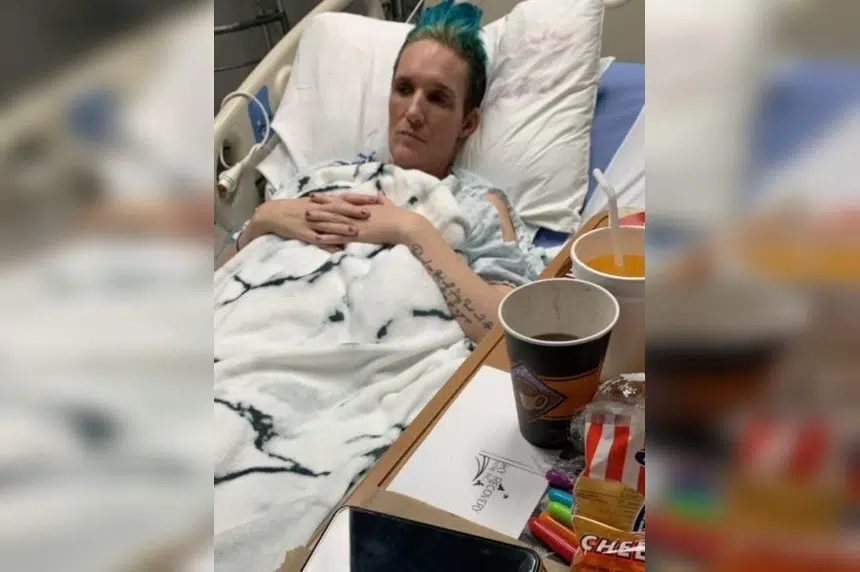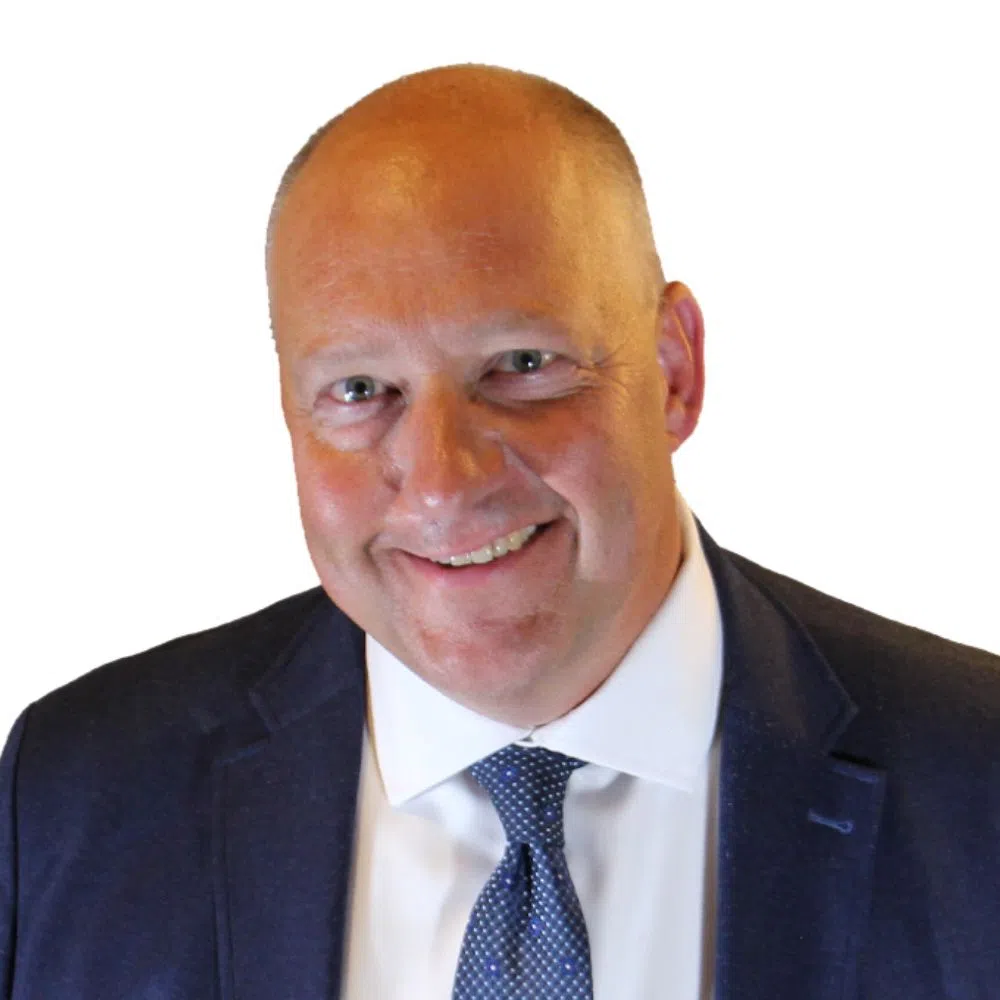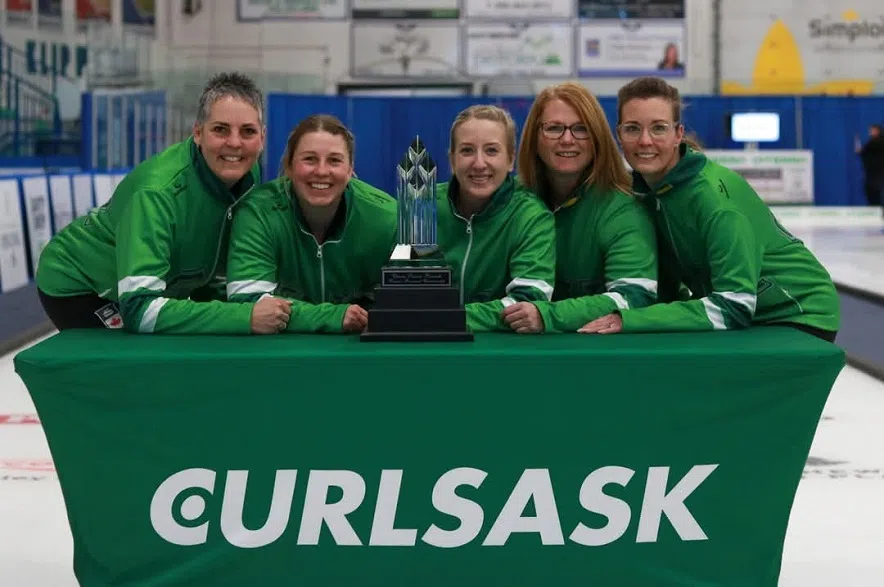Ryan is a 46-year-old recovering addict. She shared the story with 650 CKOM of her full-blown addiction to fentanyl and crystal meth.
And why did she open up to the media?
“It just takes one person to believe in you and care … That’s what addicts need. They need to feel that they just have a disease, that they’re going to be OK, that people do care,” she said.
That “one person” wasn’t just a single person who reached out to Ryan, helping her along her road to recovery. It took multiple people, over multiple years, and one pharmacist who went the extra mile.
This is Paula’s story.
As Saskatchewan has dealt with the COVID-19 pandemic in the last year, another crisis has taken a back seat — deaths by drug overdose.
In 2020, there were 273 confirmed drug overdose deaths in the province — 96 more than in 2019 — with another 67 suspected cases waiting to be confirmed.
This year hasn’t been any better, with 125 drug toxicity deaths suspected and 46 confirmed in just the first 153 days of the year.
In this series, Hidden Crisis, we get to know the people in the middle of the crisis, those who’ve died, those left behind, and those who are tasked with helping stem the flood of bodies.
‘It became my best friend’
Ryan identifies herself as an addict. Throughout her life, she struggled with addictions linked to opioids, cocaine and alcohol, which led to her issues with crystal meth and fentanyl.
She was a user before she took her first hit of crystal meth. Yet, it was a visit to a friend’s house in August of 2017 in the small 50-person village of Yarbo that changed her life forever.
She said everyone was smoking pipes at the home. The group told her it was “speed,” a methamphetamine that focuses on the user’s central nervous system. At the time, she said she didn’t know that speed was meth, a drug she had previously swore off of, knowing the issues that stem from the potent substance.
“Being an addict, if you’re bored, (you say) ‘Well, that looks like fun.’ And I was bored that Sunday, and I took a hoot of that and I sat there the rest of the afternoon and smoked it,” she said, before explaining she took the substance to her family’s farm while they were on a holiday to Nova Scotia.
“I was addicted. I was then up for eight days. I was seeing things. I was just buying more … It ruined me.”
READ MORE:
Ryan said she abandoned her family. No one knew where she was. In the first year, she said she didn’t bathe for the first two months. She had hair down to her waist, which she ended up having to cut off. That took her 14 hours, saying it was such a “matted knot” on top of her head.
Her addiction also changed the way she did normal, everyday things.
“I didn’t know how to wash the dishes. I didn’t know how to take care of myself,” she explained.
She also fell into a bad relationship, where both she and her partner would use. That turned into selling drugs on the street to support her addiction.
“I smoked so much meth. It became (like) it wasn’t enough … And I was getting bored, and I wasn’t getting the same high,” she explained.
“It became my best friend … It took all my problems away. I didn’t have to feel (and) I didn’t have to think about anything.”
There was a period of seven months where Ryan didn’t leave her bedroom. She said the only person she saw was her newfound imaginary friend, ‘Tina.’
The people she was living with at the time finally got her out by telling her that her parents were there, a coax that got her moving. At that time, she weighed 104 pounds.
She was living in Yarbo, consistently carrying naloxone for herself and the crowd she socialized with. Ryan described the rural area as “very bad” for crystal meth and fentanyl.
“There’s nothing out there for anybody that’s on drugs out there,” she said. “It is so bad. There is absolutely no help out there.”
The closest detox centre was in Regina, 2 1/2 hours away. Yorkton had no place for her to deal with her addictions, just counsellors to speak to those struggling. And even at that, it was a 45-minute commute for Ryan.
Her overdoses eventually led to a familiarity with the health system.
“They got to the point at the hospitals out there where they knew me, knew my name … There was one ambulance driver that absolutely saved my life. I say this is why I’m here today, because of him,” she said.
That ambulance driver’s name was Randy. He treated Ryan normally, like a human being, and was another person who cared about her well-being.
After her overdoses, which she said happened to her 15 times throughout her life, she’d wake up tied down to hospital beds because when she’d come out, she’d come out screaming and flailing.
She wouldn’t remember a thing when it came to the events that led to her being tied to the hospital bed. She said just as quick as she’d come in, discharge papers were there for her to sign, and Ryan would be gone.

Paula Ryan pictured on life support following one of her 15 overdoses. (Paula Ryan/Submitted)
In one of the instances, Ryan ended up on life support for six days.
That still didn’t stop her.
“I only stayed clean for about five days, and I was out again using,” she said.
It had got to the point that Ryan took her family off of her emergency contacts, so when she had to go to the hospital, her family wouldn’t find out.
‘I was not functioning at all’
Ryan said she loved fentanyl, but it was expensive. The drug has a street value of around $300 to $400 per gram. The drug came in flavours like cotton candy and blueberry.
The high would last around 10 minutes, then it was gone. After she was hooked, all she wanted to be was off of it. The withdrawals, she said, were absolutely terrible.
“You lose all bodily function. You can’t control it. The aches and the pains (when) you use (were horrible),” she said, before detailing that — at times — she would soil herself.
“I was a functioning addict back then (before meth and fentanyl). When I started smoking (those drugs), I was not functioning at all.
“It’s not a fun thing after a while. For any addict — when us addicts are all together and we’re using and talking — all we’re talking about is wanting to get clean and wanting to be with our families. I think people think, ‘They’re just partying’ and this and that. That’s not the case. It’s tiring. You’re exhausted … I realize addiction, in the beginning, is always choice, but it is a disease.”

Paula Ryan lays in her hospital bed after she was put on life support due to an overdose. (Paula Ryan/Submitted)
In December of 2018, Ryan was living in a five-bedroom home in Rocanville. She said she sold everything she owned to support her addiction.
That included her car, which was just four years old.
“I had a 2014 Nissan Maxima, and I sold it for two grams of fentanyl because I was so sick and I had no money,” she admitted through tears.
Through the four years of her full-blown addiction, Ryan had written 75 journals, all detailing the real and raw feelings she experienced. She hopes to publish them into a book one day, wanting to help others see through the addictions and see the addict as what they are:
“We’re only people.”
‘The first time in my life I went to see somebody, and I didn’t feel like a loser’
Throughout the years, Ryan had her share of people write her off as ‘just another addict.’
But her daughter never did.
In January of this year, Ryan was given a lifeline by her daughter: Move into our basement, when you’re ready.
She wasn’t at that time. It wasn’t until an incident at her home in Yarbo, where she was assaulted, that was the final straw.
She left Jan. 18 with a few suboxone pills. Suboxone helps users with withdrawals, and Ryan’s daughter had cut them in half to last her four full days when she initially got sober on that Monday in January.
On the fifth day, she was taken to Fort Qu’Appelle to see a doctor and what help they could give the recovering addict.
For the first time in her life, she found a doctor who she felt could help her.
“He was amazing. (It was) the first time in my life I went to see somebody, and I didn’t feel like a loser. He was very understanding,” she said, through tears.
She was put into the suboxone program, getting into the Miko-Mahikan Red Wolf at the All Nations’ Healing Hospital in town. She said amazing people helped her there, and it was where she met another person, a pharmacist, who treated her like a human — something she wasn’t accustomed to.
“I was like, ‘Oh god, another pharmacist who is going to be like, “Oh you’re drug-seeking.”‘ Every pharmacist I’ve ever met has just been ignorant to me. Just rude, because I’m an addict — that’s not even a joke, you talk to any addicts,” she said.
She met Kris Berg, the store operator and manager of both Pharmasave and Valley Drug Mart on Broadway Street in the community.
Berg said she had to come and see him for seven straight days to talk about the injection. This was to make sure she was serious about getting clean. After that seventh day, she received her first dose of injected suboxone.
It acts as a pool of medication, injected into the user’s stomach and released out over a month.
“(Berg) was just an angel. Him and I just hit it off, he was very understanding,” she said. “I got my first injection, and this is a wonder drug. I have had three shots now … It has knocked out all the opioid receptors in my brain. I can’t even think about fentanyl. I can talk about it so freely because I don’t crave it.”
She said today, she can’t remember the high. She doesn’t develop the sweats that she became accustomed to.
Berg told her that even if she was to — or wanted to — get high, that isn’t possible on suboxone.
Without the help of Berg, Randy the ambulance driver, or her daughter, Ryan doesn’t think she would have survived the addiction that plagued her life over the past four years.
“I just thank god that I’m here today,” she said. “I live by this quote, ‘Addiction leaves you dead way before it kills you.’ ”
Moving forward
Ryan now looks back on her time as an addict and smiles. She is 169 days sober.
Although the support systems lacked throughout her time as an addict, Ryan now wants to make change with her story. Recently, she applied to get in to post-secondary at Sundance College in Alberta.
After scoring an 88 on her entrance exam, Ryan was accepted as an Addictions and Community Help professional. Her first day was June 28.
She recently also found a place to help with her recovery in the Cathedral neighbourhood in Regina, where she now lives. She’s also in the day program for mental health in the city, relearning how to live life sober.
She said it worries her, seeing the overdose death numbers climb each and every month. As of the beginning of June, 171 have died due to overdose in the province in 2021.
Tack that on to a record-setting 2020 and the overdose crisis is at levels never before seen in Saskatchewan.
“It’s very sad. A very sad situation,” she said.
She said even the idea of naloxone makes users feel like it’s OK to overdose. She said naloxone became a crutch of sorts in her life, knowing that no matter how bad the addiction gets, you can still be brought back.
Looking at the health system as a whole, Ryan said that by sharing her story, she hopes to help at least one person.
With long wait lists for addictions help, and that help being pricey, she couldn’t imagine coming off of the streets to foot the bill of up to $30,000 to get through those programs.
She is hoping to one day help bridge the rural gaps for addictions help as well, and one day open a sober living home that’s accessible to all.
Ryan also called the province’s handling of addictions and the subsequent system gaps “such a joke.”
“Until it happens to one of them, in their family, they’re never going to understand. It’s got to happen to a person for them to fully understand what addiction is, what addiction and family is, how it rips families apart. I’m sure if one of them government people had their son or daughter (as) an addict, there would be more (supports) … that’s the way people work. They don’t know the unknown,” she said.
The Ministry of Health said it has an “extensive Mental Health and Addictions Service Directory,” in which people in rural areas can find services within their own community or a community close by. It adds HealthLine811 is also providing mental health and addiction support.
Mental Health Services are available by calling an intake line, but only if the user is located within Regina or Saskatoon. A similar intake line was not listed by the Ministry of Health in its response to 650 CKOM.
Ryan had a message for other users out there, who are also struggling.
“Get the injection (because) it changes your life. It’s a godsend. I don’t know if I would be three months clean if it wasn’t for suboxone,” she said.
On the other end of things, the now-clean 46-year-old also had a message for those looking to support loved ones who are also battling their addictions:
“One day, they will get sober,” she said. “But it has to be the addict to say, ‘I want to get sober.’ You can’t push an addict to get sober. They’re not going to do it for you.”
Hear more of Ryan’s story here.








